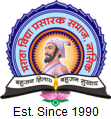Title
Creating awareness among lay population, about the anaesthesiology and role of the anaesthesiologist in the patient care.
Objectives:
1. To determine views of the lay population about the anaesthesiology and the anaesthesiologist.
2. To improve the understanding of the lay population about the anaesthesia and the extended role of the anaesthesiologist in the patient health care.
3. To alleviate the anxiety and misunderstandings of the lay population about the anaesthesia and the anaesthesiologist.
Context:
With time, anaesthesiology as a specialty has evolved leaps & bounds. Though the role of anaesthesiologist is crucial, the public knowledge of anaesthetic practice is limited. It is thus important for us to think that why the importance of this specialty is not known and how to make people aware about the vital role played by an anaesthesiologist in medical set up. It should be known that how much the patients who are going to get anaesthesia know about the role of anaesthesiologist and anaesthesiology. Hence, we started the practice to educate the lay population about the facts of the anaesthesia. It helped to create the awareness about the role of anaesthesiologist in the patient care. It also helped to understand their fears and apprehensions before surgery, their postoperative complaints and level of satisfaction regarding quality of anaesthesia services.
The Practice:
1.To create the awareness about anaesthesia and role of anaesthesiologist in patient care, each and every patient is attended and examined in designated anaesthesia OPD i.e. pre-anaesthesia check-up OPD. It helps the patient to have personal acquaintance with the anaesthesiologist.
2. In OPD patient is informed about type of anaesthesia planned for the surgery, the pros and cons regarding the anaesthesia, potential risk and problems, preoperative and postoperative care to be taken. This is explained in vernacular language for better understanding.
3. The consent form is given to the patient explaining type of anaesthesia, its risks and benefits so that the patient is fully aware about the anaesthesia.
4. The posters are being displayed in OPD which educate the patients as well as the relatives about role of anaesthesiologist, types of anaesthesia, the crucial information that patient should convey to anaesthesiologist.
5. The radio programmes are conducted periodically about beliefs and misbeliefs regarding anaesthesia to create awareness about anaesthesia and to alleviate the anxiety and unrealistic fears.
The anaesthesia procedures, the safety of anaesthesia, the role of anaesthesiologist in patient care is being explained in detail in the form question and answers in vernacular language, in these programmes.
6. Every year the World Anaesthesia Day is being celebrated on 16th of October every year.
i. On this day skits are done by the anaesthesiologist in vernacular language, explaining anaesthesia in interesting way.
ii. COLS training is being given on mannequins to all lay population in the hospital, so as to make them aware about the emergency help to be provided in case of sudden cardiac arrest scenario.
iii. The posters are being displayed which educate the population about the history of the anaesthesia, its types, safety and the risks of the anaesthesia, extended role of the anaesthesiologist, in simple language.
iii. The feedback forms are given to the lay population after attending the programme so as to understand the success of the programme and probable improvement needed to create more awareness among the population.
7.The questionnaires are being given to the patients and the relatives about their knowledge about anaesthesia and anaesthesiologist.
The questionnaire is in vernacular and simple language so as to make them understand the true facts about the anaesthesia and the anaesthesiologist. Upto the date more than five hundred people have solved the questionnaires.
Evidence of Success:
It is observed that there is lot of improvement in the patients and the lay populations view regarding anaesthesia and the anaesthesiologist. It is assessed periodically in the form of simple questionnaires. It is helping to get more cooperation from the patient during the procedure. The patient is more relaxed during the surgery.
The process of creating awareness is an ongoing and continuous process which is being done by the anaesthesia department, VPMC medical college, with lots of enthusiasm and great sincerity.
Problems Encountered:
The limited group of the population was not able to solve the questionnaire because of the illiteracy or low education level.
Few were reluctant to fill the questionnaire so it was not possible to assess their knowledge about the anaesthesia.
Questionnaire to create public awareness about anaesthesia and the anaesthesiologist
- Have you undergone any anaesthesia for surgery before?
- Yes
- No
- Are you aware about what is anaesthesia?
- Yes
- No
- Do you know that an anaesthesiologist is a qualified and skilled postgraduate like a surgeon?
- Yes
- No
- Are you aware about the role of an anaesthesiologist inside operation theatre?
- Yes
- No
- Do you feel it is important to meet your anaesthesiologist before surgery?
- Yes
- No
- Do you feel it is necessary to tell about your diseases, allergies, past surgical history and drugs you are taking to your anaesthesiologist?
- Yes
- No
- Are you aware that your anaesthesiologist takes care of yourself before, during and after the surgery?
- Yes
- No
- Are you aware about the role of anaesthesiologist outside operation theatre?
- Yes
- No
- Are you aware that there is separate consent form for anaesthesia to be necessarily filled before surgery?
- Yes
- No
- Do you feel there is any need to know about, type of anaesthesia , its risks and benefits in detail?
- Yes
- No

